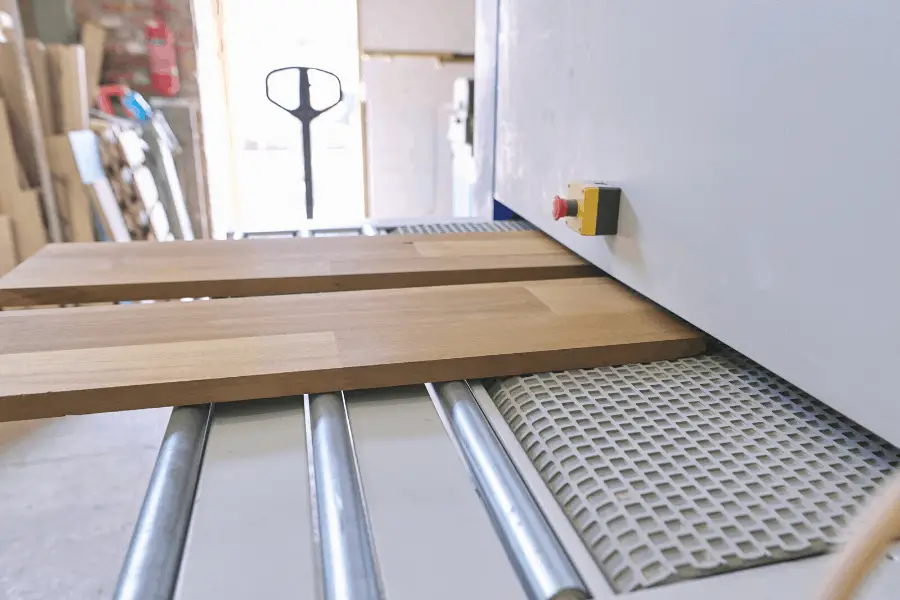
A drum sander is a brilliant tool for sanding wood floors. If your wood floor is in poor condition, a drum sander may be the only way that you can fix it. There are so many helpful options when it comes to sanding down your project. Each tool has a specific purpose and function that separates it from the others. I’ve researched through the internet and put together a quick summary on the Drum Sander.
What is a drum sander used for? The drum sander is used for sanding long planks of wood to make them thinner, flatter and smoother; they look similar to a planer. It is used to sand floor boards, panel boards, frames, plywood, fence boards and long plank of wood you need for your project.
Keep reading below to learn more about the Drum Sander and what it can be used for.
What Is A Drum Sander Used For?
A drum sander is a big and strong tool people typically use for finishing wood floors. There are some other uses for a drum sander in a wood shop, mainly for making thin stock. The drum sander is worth considering, as it can improve your workflow and overall quality of work.
While it may tempt you to use a drum sander like a planer, this is not an outstanding idea. It can lead to heat buildup, burnt sandpaper, blown fuses, and a bad piece of wood. A drum sander can work on hardwood floors because of the nature of the wood. The hardwood used in flooring will retain more heat, creating less of a heat buildup when using the drum sander.
Keep in mind that the best time to use a drum sander is if your hardwood floor has major issues, since it is such a powerful sander. These issues include things like grooves, pits, discoloration, and more.
How To Use A Drum Sander
The drum sander spins a piece of sandpaper around continuously to sand down the wood as much as you would like. Since a drum sander is so powerful, you need to use caution when using one on your wood floors. If you aren’t careful, you can end up ruining your wood floor and creating unsightly grooves that can’t be fixed.
On the flip side of that, if your wood floor has major imperfections, the drum sander has enough power to sand out those imperfections and make your floor look beautiful again. Just approach the job with caution and don’t sand too much at one time.
When using the drum sander, you will pull the machine rather than pushing it. This will be in the opposite direction of the drum motion. Applying no extra pressure, follow the grain of your wood and run the drum sander in straight lines.
Keep in mind that your drum sander will not allow you to get too close to trim, walls, doors, and other elements of your home because of the size of the tool.
Versatility of Drum Sanders
Subscribe to Rockler Woodworking and Hardware on Youtube
What Type Of Sandpaper Should I Use For My Drum Sander?
Unique types of sandpaper are categorized by the amount of grit that they have. A higher number of grit will coincide with a more aggressive sanding.
Because the drum sander is so powerful, it can be useful to use a lower grit sandpaper. This way, you can slowly work towards the amount of sanding that you need done, rather than overdoing it. 80-120 Grit sandpaper should work well for your project.
Avoid Using an Extension Cord.
Avoid using an extension cord with a drum sander because of the sheer power of the tool. You must only use an electrical cord that came with the drum sander, or an extension cord the manufacturer allows you to use.
Since the tool draws so much power, using a regular old extension cord will create a fire hazard. The drum sander can melt an extension cord that is not sized properly.
Woodworking Joke:
George bought a new lathe and, like all men, he opened up the boxes and started putting it together without reading the instructions.
When he ran into trouble and looked at the paperwork, he saw this:
“You’ve already unpacked it, haven’t you? You’ve probably even plugged it in already. Well, have you? We should probably just break the darn thing at the factory, and save everyone the bother…”
